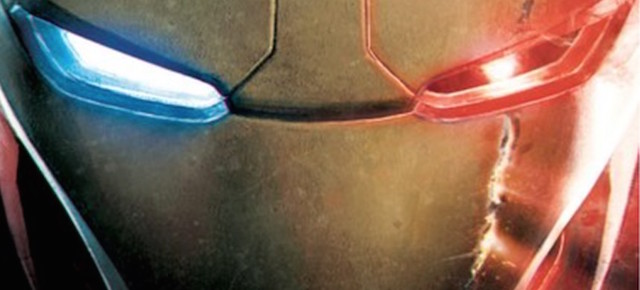
Spoilers follow.
The Avengers: Age of Ultron is a bafflingly different film from its cherished predecessor. It takes enormous risks which, when they succeed, succeed spectacularly, but at their worst only fail to spark. What The Godfather Part II is to The Godfather, Age of Ultron is to the first Avengers, and the enlargement of scope and emotional intensity smooth out the splintered edges where Joss Whedon’s vision outstripped his reach. Its scope is astonishingly wide: it probes an array of existential questions and, in true Whedon fashion, doesn’t shy away from answers the director himself doesn’t hold yet can’t avoid affirming in his art.
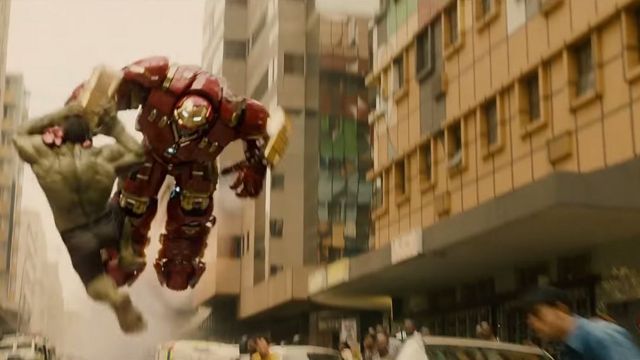
While the first Avengers reveled in the exhilaration of being superheroes by emphasizing the binding together of fractured image-bearers into a found family (one of Whedon’s trademarks), Age of Ultron emphasizes the very human fractures which make up these individuals and drive their need for found family; indeed, it depicts the forces within and without which aim to tear apart and dehumanize families. Along the way it meditates on fallen man’s obsessive urge to wield control, on how we rely on technology to provide solutions to all of our problems, and offers a vision what true humanity must look like if we are to resist reductive accounts of being human. In so doing, it vividly captures the miserable failure of theologies of glory to effect real change in the world.
By making Tony Stark’s (Iron Man) project to develop a peacekeeping artificial intelligence the catalyst for the possible extinction of the human race, Whedon lays bare a closed loop in our reasoning. Any “solution” to the problem of the world’s evil that treats that problem solely in terms of the existing system and fails to reckon with the evil within the would-be reformer is doomed not only to fail but to actually exacerbate the problem. As Tony recognizes midway through the film, the images of disaster that have haunted him may be coming true precisely because of his hubristic attempts to prevent them.
Tony clearly hasn’t changed all that much since Iron Man 3 and still instinctively pursues technocratic solutions to every dilemma he faces, real or imagined. Motivated by a profound fear of threats beyond Earth, he will stop at nothing to create the weapon humanity needs to repel the invaders. But here is where Tony becomes our Dr. Frankenstein: afraid that he and his friends won’t be enough to defend the planet, he constructs a replacement in his own image to fight Earth’s battles in his stead. In essence, Tony fashions a person to execute his vision for the world and, with Bruce Banner’s (the Hulk) aid, takes advantage of the power within Loki’s scepter to make it a reality. When Tony claims the scepter for himself at the beginning of the film and puts HYDRA robotics to use for his own purposes, we are meant to see a parallel to the grasping of the forbidden fruit in Eden. And, just as in Eden, what seemed wise and desirable unleashes death and ruin.
Tony’s “need” to maintain control at any cost leaves the world vulnerable to a threat greater than any they’ve yet encountered: a genocidal robot convinced of the moral inferiority of the human race, bristling with Oedipal rage at the Avengers for their hypocrisy. “How could you be worthy?” he demands. “You’re all killers.” This is the defining moment in the life of this collective, the Avengers, where they are confronted with the truth of who they are by the mirror image their son Ultron holds up to them.
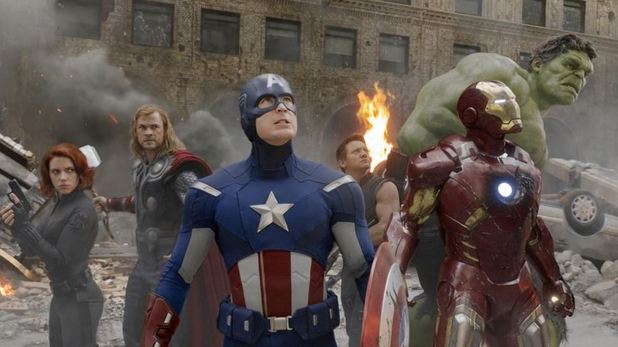
And they aren’t far removed at all. All of them apart from Thor are the products of some superpower fashioning offspring for itself. These are the sons and daughters of the world’s great powers, engineered to accomplish their ends, to right the world’s wrongs as they saw them from their apical, theology of glory roosts: Black Widow, trained from her youth to be an assassin; Captain America, an experiment to design a super soldier capable of defeating the Nazi Ubermensch; the Hulk, a beast born out of the military-industrial complex’s aim to recreate that original super soldier; and Iron Man, heir to the world’s largest, most sophisticated weapons manufacturer and the silent benefactor of SHIELD. All of them are the manipulated machinations of competing technocracies vying for dominance, politico-economic exploitations of the human bred to clutch onto and maintain control of the world, a control which is only ever illusory, which undermines itself and heaps its ruin upon its own head.
None of this is far removed from the world we inhabit, is it? What benediction would the Lord of Creation pronounce upon our culture, where children can be manufactured as products to fulfill corrupted visions of familial happiness, assembled from the genetic information of donors they will never meet and carried to term by surrogate mothers they will likewise never know. This anti-creation practice distorts humanity, reducing our immanent characteristics to consumer commodities. The Sexual Revolution decoupled reproduction from its place within the family and reduced the body to a set of utilities; postmodernism furthered that dissociation by sealing off telos and overarching narratives from the question of what it means to be human. And now transhumanism is erasing the boundaries of embodiment, reducing our image-bearing faculties to nominalist convention, devaluing this strange phenomenon, human existence.
However much the Avengers and we, the audience, identify with older concepts of the human condition and of justice, we nevertheless find our stated ideals subverted by the voluntarist ethos we inherit and subconsciously inhabit as Westerners. As a result we routinely view freedom as a merely formal thing, as freedom from- rather than freedom for-. We desperately need a substantive vision of freedom which will do more than leave us as Hercules at the crossroads, incapable of deciding which way is best. We aren’t so different from the Avengers, who “want to protect the world, but don’t want it to change.” Ultron sees through the scrim of our “righteousness” and exposes our shortcomings.
Ultron, in the end, is a monster not because he is manufactured but because he bears his father’s image. Like begets like, and Stark’s failures (indeed, all of the Avengers’) will be Ultron’s. “Ultron can’t tell the difference between saving the world and destroying it,” Wanda Maximoff pleads to the team. “Where do you think he gets it?” If Tony has something of a god-complex, Ultron will follow in his footsteps and exhibit the same destructive, deluded behavior. “Upon this rock, I will build my church,” Ultron riffs as he absconds with a cache of vibranium, the hardest metal on earth. Within an old church in Sekovia, Wanda and Pietro’s homeland, Ultron notes how the city’s founders situated the church at the precise center of the city so all could be equally close to God; Ultron chooses this very location for the doomsday device he unveils in the film’s climax. He calls the Avengers his “terrible, swift sword” after allusions to Noah and to God winding his arm to swing a rock at the world.
As a “suit of armor around the world,” Ultron is a spectacular failure. Because he has no concept of grace, he sees only man’s transgressions and concludes the problem with the world is the human race. Ultron is the Law made flesh; unyielding and pitiless. His mission to save the world, bereft of the cross and reliant upon pure, mathematical logic, can only spell the annihilation of the human race.

Tony’s vision for Ultron is cut from the same cloth as Natasha’s (Black Widow) or Bruce’s former masters’, ironically summed up in Neville Chamberlain’s tragically shortsighted pronouncement of “peace in our time.” In true Frankenstein fashion, however, Ultron is the inversion of everything Tony stands for and aims to achieve. His emergence at the peak of the postmodern era would suggest Ultron is the end product of all the 20th century’s schemes and warring narratives. The incipient death drive within all fallen power structures inevitably manufacture their own demise, but Ultron sees himself as the antitype every smaller fulfillment pointed to. “Everyone creates the thing they dread,” Ultron pontificates:
Men of peace create engines of war, invaders create avengers. People create… smaller people? Ugh! Children! Lost the word there. Children. Designed to supplant them. To help them end.
Ultron identifies himself as the personification of Tony’s and the human race’s death drive even as he positions himself as the next stage of human development. In doing so, however, he carries on the myth of progress ingredient within the master narratives he seeks to eradicate. It isn’t only messianic ambitions and quick wit Ultron inherits from his father; ironic inconsistency is part of that inheritance as well. Ultron is more human than he would ever recognize or care to admit.
For all his stated hatred of human beings, Ultron manifests a painful yearning to be human in a pre-Fall economy; he, too, longs for companionship (note his attention to Wanda and Natasha), for fleshly embodiment (he designs the Vision with Dr. Cho’s tissue replicating technology as the final stage for his development), for a legacy to leave his offspring. However much he may protest to the contrary, even Ultron can’t escape the urge to pursue an embodied vision of shalom for himself.
Interestingly, the film depicts this vision of shalom in two ways: negatively, by exposing the Avengers’ deep seated fears (which keep them locked in the past, interestingly enough— at some level they truly can’t allow the world to change) through Wanda’s nightmarish powers of mind control, and positively, by introducing us to Clint Barton’s (Hawkeye’s) family, secretly tucked away off the grid for their own protection. After Wanda single-handedly cripples the team by opening old psycho-emotional wounds, Clint opens up his home as a refuge to recover from the thrashing they’ve inflicted upon them. The team is shocked by the tranquil normalcy of the Bartons’ home but slowly acclimates. Here, children are not means to accomplish the death of the parent; here there is life shared among the family, not ruin and misery.
This sets up one of the most interesting and misunderstood scenes in the film, an exchange between Bruce and Natasha. Natasha is very forward with Bruce and announces her feelings for him, feelings Bruce reciprocates but feels powerless to act upon because of the Hulk. “I can’t have this,” he laments, looking over the Bartons’ home. “Anywhere I go I will be a monster.” Natasha then shares with him the story of her training in the Red Room where she was forcibly sterilized to make it easier for her to kill. “Still think you’re the only monster?” she asks, tears washing down her face. Bruce sees firsthand that the monstrosity lies in the wrong done to their humanity and not in his being or hers.
This is why you shouldn’t buy the furor over gender caricatures in Age of Ultron: Natasha doesn’t see herself as a monster because she holds zero utility as a child bearer— she recognizes and laments the creational good that has been denied her in order to solidify her identity and vocation as assassin. It’s not that sterility leaves her bereft of an alternative life to fantasize about: it’s that she is forcibly cut off from an important dimension of the glory of being human, a dimension pronounced good in the beginning and blessed as a means of bringing further blessing into the world. She doesn’t yearn for an escapist fantasy to indulge at times— she yearns for motherhood. We know that her heartache issues out of this violation of her humanity and not from a suppression of her “right to choose” because the immediate context is the audience’s and the other Avengers’ discovery of Clint’s family, a sequence Joss Whedon strenuously fought to preserve in the film against Marvel’s wishes. Its presence in the final cut presents us with another hermeneutical key for unlocking the film as a whole and Natasha’s character in particular.
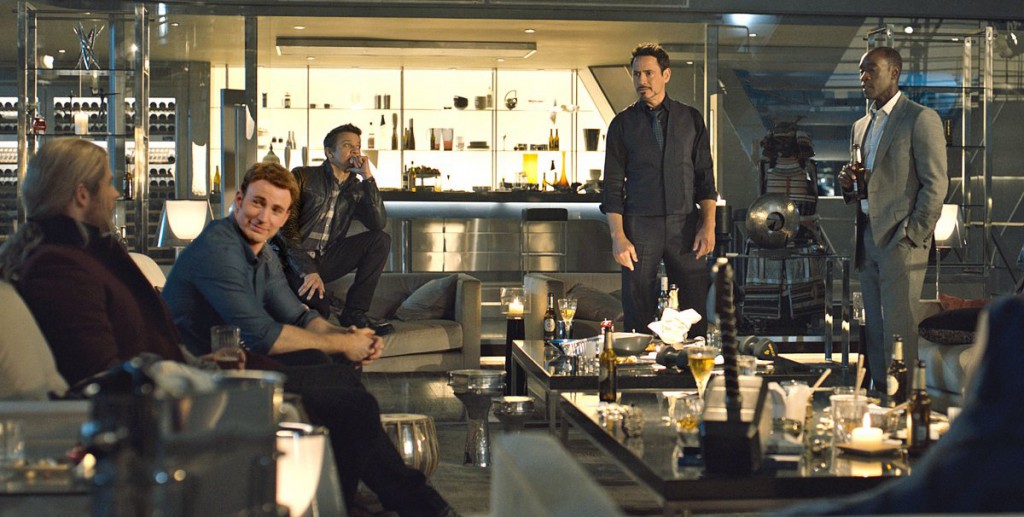
We know that Bruce’s complaint that he’s incapable of fathering children isn’t a throwaway line meant to render Natasha’s plight more believable because of a crucial, albeit subtle move he makes when we are first introduced to him in The Avengers. When Natasha comes to him to recruit him for the team, he eyes an empty cradle, gives it a forlorn push and sighs, “I don’t always get what I want.” Bruce has mourned his inability to have a family of his own ever since his becoming the Hulk. Procreation isn’t the only goal of human existence, but it is an important aspect of our resemblance to our Maker. Bruce’s and Natasha’s grief is the grief of ones who, in their being, are stamped with the image of God, whether they acknowledge it or not, and cannot but long for the goods which, tarnished though they are by our first parents’ rebellion, haven’t decomposed into absolute ruin. In a moment of great redemptive beauty, however, their shared barrenness becomes, not a stumbling block, but a point of contact that draws them closer to one another in love.
The sacramental power of family restores the team as a unit and as individuals. Their commitment to one another and their calling is reaffirmed as they rehabilitate in the Bartons’ hidden Edenic outpost. Clint’s wife is right: the team needs him to pull together and, just as importantly, stay together. His contribution to the team is a gravity which centers the others and preserves their place in the superpowered constellation. The other Avengers are life takers, life savers and preservers, but they aspire to be more: life givers. And the frustration of this dream fuels their unity and disunity both. Clint, the consummate family man, is grounded in a specific way in which none of the others can be, and thus he has something to offer the team they can’t find anywhere else. The Bartons’ extension of hospitality did more than give them a break: it enfolded them within his family and administered sorely needed grace. This move by the Bartons is the first to rupture the team’s stasis and open a new horizon of possibility.
The second is the Vision who breaks the mad scientist loop Banner rightly fears he and Tony are locked within— he is the Frankenstein monster who confounds both sets of would-be owners. In the Vision, the Frankenstein dialectic resolves in our favor at last: Tony created Ultron, who turned against his maker, who created the Vision, who turned against his maker. Filling out the Frankenstein imagery is the lightning that Thor, spurred on by his vision of the android as a potential deliverer, summons to animate the Vision: summoned by his hammer Mjolnir, a mystical instrument bequeathed to Thor’s people by a superior cosmic power. The hammer’s ability to recognize worthiness in individuals is a testament of its origin beyond the scope of mortals, so its bestowal of life upon the Vision points toward a possibly divine intervention setting the synthetic being apart for a purpose altogether different from Tony’s or Ultron’s.
The Vision’s birth and consecration become highly suggestive of the Incarnation in this way, especially given statements he makes throughout the film’s final act. When asked what side he’s on, he stammers, “I am… I am!” The echo of God’s name in his astonishment at self-awareness is no accident. Ultimately he answers he’s on the side of Life, which complicates matters: there’s no guarantee he’ll align himself either way in the Avengers/Ultron binary system. “I’m not what you are and not what you intended,” he intones; there’s a third option at work in the world, a cause which for the time being at least overlaps with Tony’s but isn’t reducible to or identical with it, a cause worthy enough it wins the loyalty or their former enemies Wanda and Pietro Maximoff. Vision is himself a glimpse of corporeal grace offering another way of being, one that is truer to what the team has aspired to be and fallen short of.
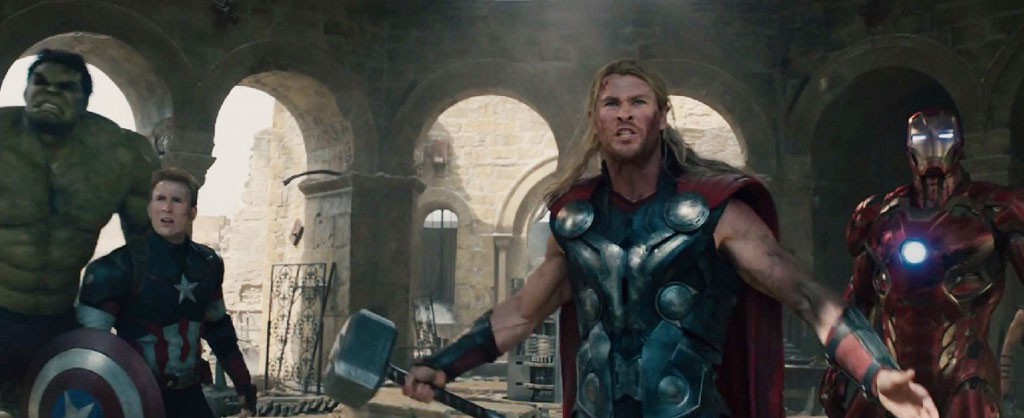
The Vision’s final exchange with Ultron at the end of the film nicely captures the Christological bridge the Vision provides for the future of these characters.
Ultron: Stark asked for a savior, and settled for a slave.
Vision: I suppose we’re both disappointments.
Ultron: [laughs] I suppose we are.
Vision: Humans are odd. They think order and chaos are somehow opposites and try to control what won’t be. But there is grace in their failings. I think you missed that.
Ultron: They’re doomed!
Vision: Yes… but a thing isn’t beautiful because it lasts. It is a privilege to be among them.
Ultron: You’re unbelievably naïve.
Vision: Well, I was born yesterday.
“Asking for a savior and settling for a slave” demonstrates how Ultron cannot recognize grace even when it is staring him in the face. Its oblique reference to Mark 10:45 (“For even the Son of Man came not to be served but to serve, and to give his life as a ransom for many”) cements the image of true humanity and true lordship which will one day rule the world with equity. Ultron’s theology of glory, like Israel’s before him, can’t fathom a deliverer who takes the form of a slave and denies himself out of love for others.
In the end, thirdly, this is why it falls on Captain America to confront Ultron’s material critique:
Ultron thinks we’re monsters and we’re what’s wrong with the world. It’s not just about beating him – it’s about if he’s right.
Cap can honestly say that if Ultron is right then they ought to die. Cap is always ready to burn down and walk away from any association that will jeopardize the integrity of his vocation; this is the man who took down SHIELD in The Winter Soldier, after all. And this is why it’s beautiful that the Man Out of Time is the one who has to call for change. They can’t keep playing by the capitalist-imperialist rulebook. They can’t only oppose evil; they must sacrifice to serve life. This new vision (and here arises the crucial pun of Vision’s name) calls for a radical responsibility to others, for death to self, and a deeper rootedness in the human life-world they formally exist to protect. It will call for an ethics of embodied self-involvement that will no longer entrust everything of importance to new technology and mechanical proxies; it won’t dispatch drones to keep non-combatants safe; it will personally lead civilians to safety, see them, touch them, and talk with them. It isn’t enough that the Avengers turn their backs on the exploitative narratives which bred them in the first place, or that they hunt down and smash humanity’s enemies, nor is it enough to throw money at every mess they make around the world. These are easy, American answers, answers to questions which refuse to countenance the imago Dei.
No, the Avengers must eradicate the enemy within, the enemy that subverts all of their efforts to save the world. They must cleanse the leaven within if they are to be agents of real change. This is a substantive vision they will never learn to embrace from the glamour of Avengers Tower. It will take standing shoulder to shoulder in a church prepared to be defeated together. But whoever would lose his life, the Master promised, will save it. May we have the courage to confront our inhumanity and together bear the Law’s rebuke even as we find nourishment in the family of God and receive the healing we so desperately need.

COMMENTS
10 responses to “Being Human in an Age of Ultron”
Leave a Reply













Wow. You really knocked yourself out here, Ian. Brilliant stuff. Thank you.
Wow. I would have payed cash to have been able to sit in a bar and debrief on this film with Ian after I saw it last week. I’d love to hear more from Ian on the “human creation” of “The Vision”. I had a problem with it when watching the film, but I’m seriously second-guessing that after reading here.
Yeah, great point about the Vision’s origin. When it became apparent that Ultron wasn’t going to be the sole creator of the Vision as in the comics, I clenched my fists and set phases to “hate.” Counting on a technologically Pelagian deus ex machina (the perfect irony of that phrase in this instance!) to save the day a la Interstellar, I was monumentally surprised to find myself enjoying the film’s spin on how Vision comes to be. Because it isn’t that we really do have the answer, and we just need to do better this time- Ultron 2.0, as it were. Is that precisely what Tony Stark intends? Absolutely! What this reinterpretation shows is that nothing has changed for Stark, he’s still trapped in his technocratic closed loop and will actually go so far as to open fire on his teammates to create his new monster. Banner’s line about being stuck in a loop isn’t an accident- Tony’s as incurvatus in se as he was in Iron Man 3 and will fall back to the same techniques as ever in spite of everything that’s gone so disastrously wrong in Age of Ultron. This is one of the reasons I find Ultron as sad as it is, in fact.
But it becomes more than a man-created hero origin with the addition of Mjolnir. During the team’s showdown in the lab, Pietro detaches all of the cables hooked up to the Cradle, keeping this thing alive within it. Proto-Vision will die in moments. But- Thor, spurred on by his visions (aha!) overrides Ultron’s, Tony’s, and Pietro’s intentions and gives this creature life with the power of the hammer. There really is something of a divine spark which makes Vision a living creature, and, as he makes them aware, “more than what [they] intended.” Yeah, it’s a little Apollonarian (I think? Someone back me up or point me in the right direction!) but the divine-creaturely fusion straight outta the Cradle (aha!) seems to me a clear signal towards Incarnation even if the details are more than a little off.
As it is, I think the Frankenstein dialectic is still there disintegrating Ultron’s theology of glory, but going into the movie I envisioned it being much more linear: Stark creates AI in his image, it revolts against him; that AI creates an AI in his image, it revolts against him; grace intervenes and uses the final creature to save us from what we deserve. I’m still ok with it! Not that Whedon’s asking.
Thanks for the response Ian. That’s a great take on it, and to be fair, I don’t give “Avengers” the same “gospel resonance” treatment that I give to more directly human stories that come from movies like “Whiplash”, or shows like “Louie”. Bottom line, I need a comic book savvy interpreter to help me process a lot of this.
I especially appreciate your “not that Whedon intended it” posture. When I’ve written and spoken about King and Shawshank, I’ve used the “not that King intended”, or “not that King cares what I think” verbiage over and over. Image-bearerness is what it is – the best possible common grace gift.
Apollinarian* Flippin’ spell check…
incredible
Awesome job Ian!!! 🙂